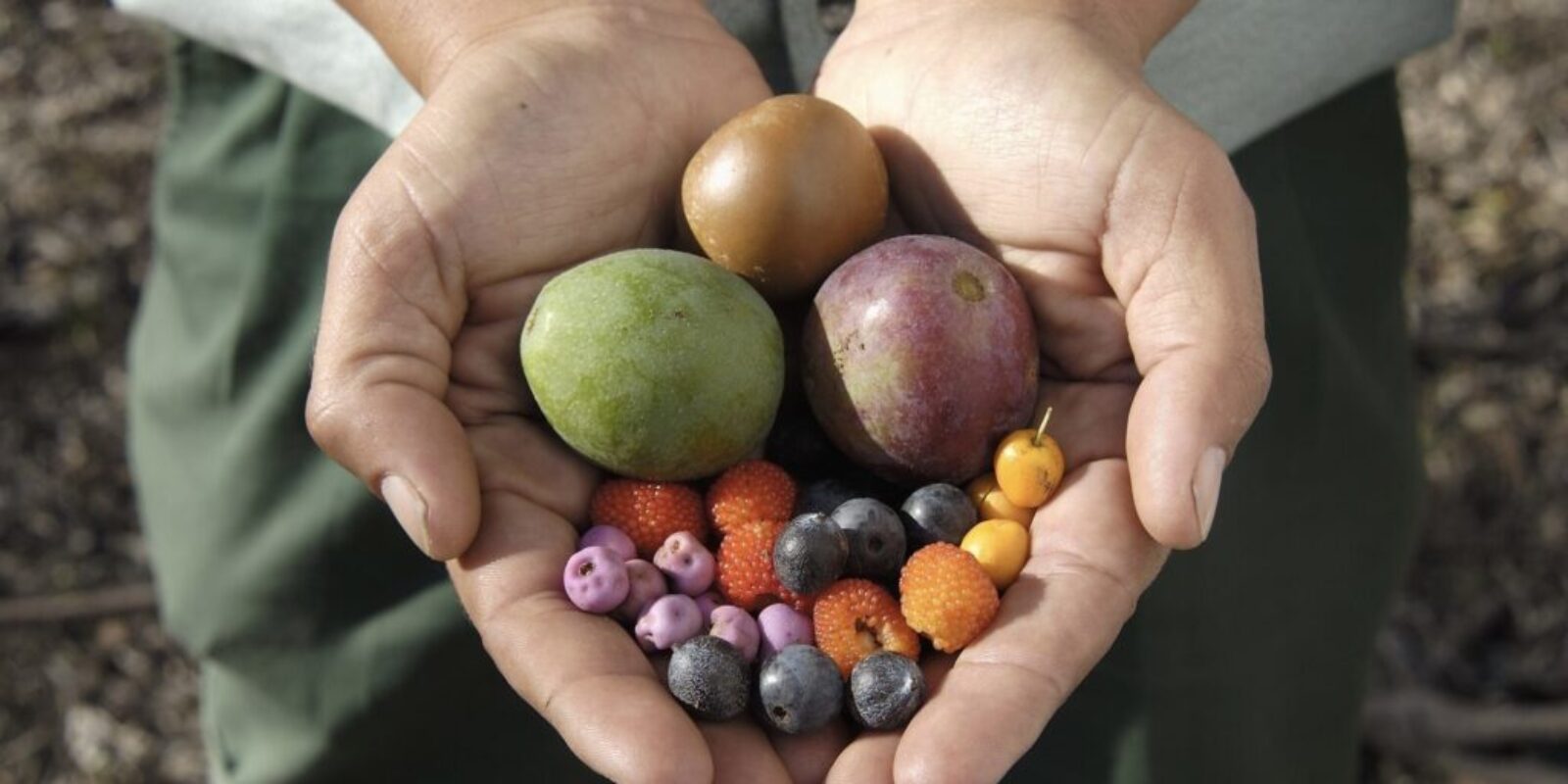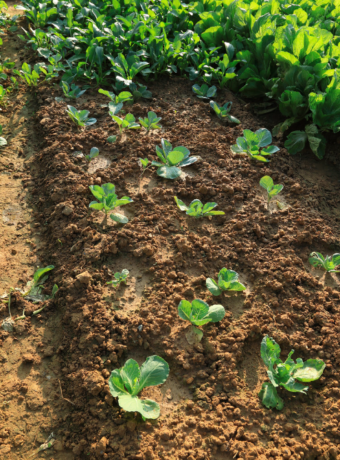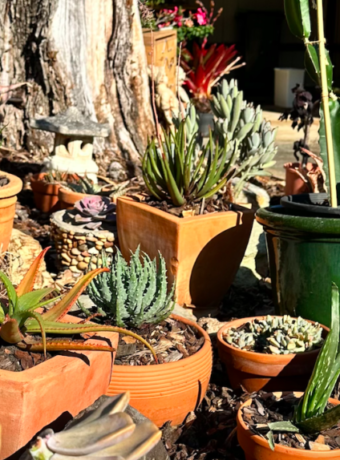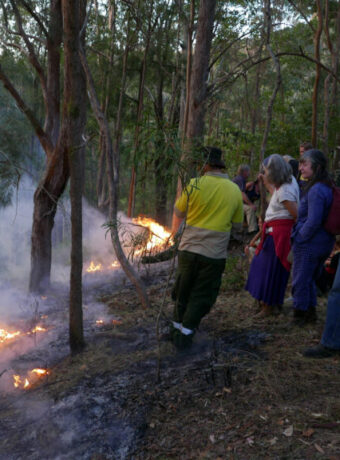One of the key principles of permaculture is to work with nature, rather than against it, to create regenerative systems that produce food, medicine, and other useful resources while improving soil health, conserving water, and increasing biodiversity. A native ‘bush tucker’ garden is a garden that is planted with edible native plants that have traditionally been used by Indigenous Australians for food, medicine, and cultural purposes. These plants are well adapted to the local climate, soil, and pests, and often require little water or maintenance once established. They also support local wildlife such as birds, insects, and small mammals, which can help to improve the health of the ecosystem as a whole.
Building a native ‘bush tucker’ garden is a great project for beginner permaculturalists that allows you to apply permaculture principles in a practical and meaningful way, while also connecting with local Indigenous cultures and supporting the health of the local ecosystem.
Native Plants Promote Biodiversity Conservation
A native garden is good for biodiversity conservation because it provides a habitat for local flora and fauna that are adapted to the local ecosystem. Native plants, in particular, are better suited to local conditions such as soil type, rainfall, and temperature, and often require less water, fertiliser, and pesticides than non-native plants. This means that they are generally easier to grow and maintain, and provide a more stable and sustainable ecosystem.
Native gardens are also good for biodiversity conservation because they can help to increase the diversity and abundance of local wildlife. Native plants provide food, shelter, and nesting sites for a wide range of animals, including insects, birds, mammals, and reptiles. These animals, in turn, can help to pollinate plants, control pests, and improve soil health by providing nutrients and aerating the soil.

Another benefit of native gardens for biodiversity conservation is that they can help to protect and restore local ecosystems that have been degraded or destroyed by human activities such as urbanization, agriculture, and mining. By planting native plants and creating a habitat for local wildlife, we can help to restore and maintain a healthy and resilient ecosystem that can support a wide range of plants and animals.
In addition to these benefits, native gardens can also help to raise awareness and appreciation for local biodiversity and promote conservation efforts. By creating a beautiful and functional garden using native plants, we can demonstrate the value and importance of conserving local ecosystems and encourage others to do the same.
Experience New Flavours & Health Benefits
A native bush tucker garden allows you to expand your palate and try new flavors because many of the plants in the garden have unique and distinctive flavors that are not commonly found in traditional Western cuisine. These plants are often rich in flavor, with a range of tastes that can be sweet, sour, salty, or bitter, and can be used to add depth and complexity to dishes. By incorporating these plants into your cooking, you can experiment with new flavors and textures, and create unique and delicious dishes that showcase the diversity and richness of Australian cuisine.

In addition to their culinary value, many native Australian plants also have health and medicinal benefits. For example, Kakadu plum, which is native to Northern Australia, is one of the richest sources of vitamin C in the world, and is used in traditional medicine to treat a range of ailments such as colds, flu, and infections. Lemon myrtle, which is native to the east coast of Australia, is known for its antibacterial and antifungal properties and is used in traditional medicine to treat digestive problems, skin irritations, and respiratory infections.
Other examples of native Australian plants with health and medicinal benefits include:
- Wattleseed: a versatile seed with a nutty, coffee-like flavour, high in protein and fibre, and with anti-inflammatory properties.
- Davidson’s plum: a tart, dark-purple fruit with high levels of antioxidants, anti-inflammatory and antimicrobial properties, and potential benefits for cardiovascular health.
- Quandong: a tart, peach-like fruit with high levels of vitamin C and antioxidants, and potential benefits for skin health and digestion.
- Native ginger: a spicy, fragrant rhizome with anti-inflammatory and antimicrobial properties, and potential benefits for digestive health and immune function.
By incorporating these plants into your diet, you can not only enjoy their unique flavours but also benefit from their health and medicinal properties. In addition, using native Australian plants in cooking can also promote the conservation and sustainable use of these plants, and contribute to the revitalisation and promotion of Indigenous food systems and knowledge.
Connect with Indigenous Culture
Building a native ‘bush tucker’ garden is also a great way to connect with local Indigenous cultures and learn about the traditional uses of native plants. Many Indigenous Australians have been using these plants for food, medicine, and cultural purposes for thousands of years, and have a deep understanding of their ecological and cultural significance. By planting and using these plants in your own garden, you can help to support and celebrate Indigenous knowledge and culture.
A native bushtucker garden can help to connect with Indigenous culture and knowledge in a number of ways. One of the primary ways is by incorporating traditional Indigenous plants into the garden, which have been used by Indigenous peoples for thousands of years for food, medicine, and cultural purposes. By planting and using these plants, we can learn about their traditional uses and connect with Indigenous culture and knowledge.

In addition to planting traditional Indigenous plants, a native bushtucker garden can also be designed to reflect Indigenous cultural practices and beliefs. For example, the garden could be designed to reflect traditional Indigenous agricultural practices such as companion planting, crop rotation, and intercropping. The garden could also incorporate Indigenous art and symbols, such as rock art, totems, or sculptures, which can help to celebrate and promote Indigenous culture and knowledge; just make sure that this is done in collaboration with Indigenous members of your local community, don’t appropriate a culture that isn’t yours! By working with Indigenous elders, knowledge keepers, and community members, we can learn about their traditional practices and beliefs, and incorporate them into the design and management of the garden. This can help to build relationships of mutual respect and understanding, and promote the sharing of Indigenous culture and knowledge.
Getting Started
Before you start planting, you’ll need to spend some time observing your site to determine factors such as sun exposure, soil type, and water availability. You’ll also need to plan your garden layout, taking into account factors such as companion planting, crop rotation, and pest management.

Once you’ve planned your garden, you can start zoning your site to make the most of the available space. For example, you might plant taller trees and shrubs along the northern or western edge of your garden to provide shade and wind protection, while planting shorter herbs and groundcovers in sunnier areas. You can also use zoning to create microclimates within your garden, such as planting moisture-loving plants near a pond or water feature.
You can get started by growing Native Edibles from seed, tubestock, or seedlings. Whether you have a small balcony or a large backyard, there are many native plants that can be grown for food, medicine, and cultural purposes, and building a ‘bush tucker’ garden is a great way to get started.



